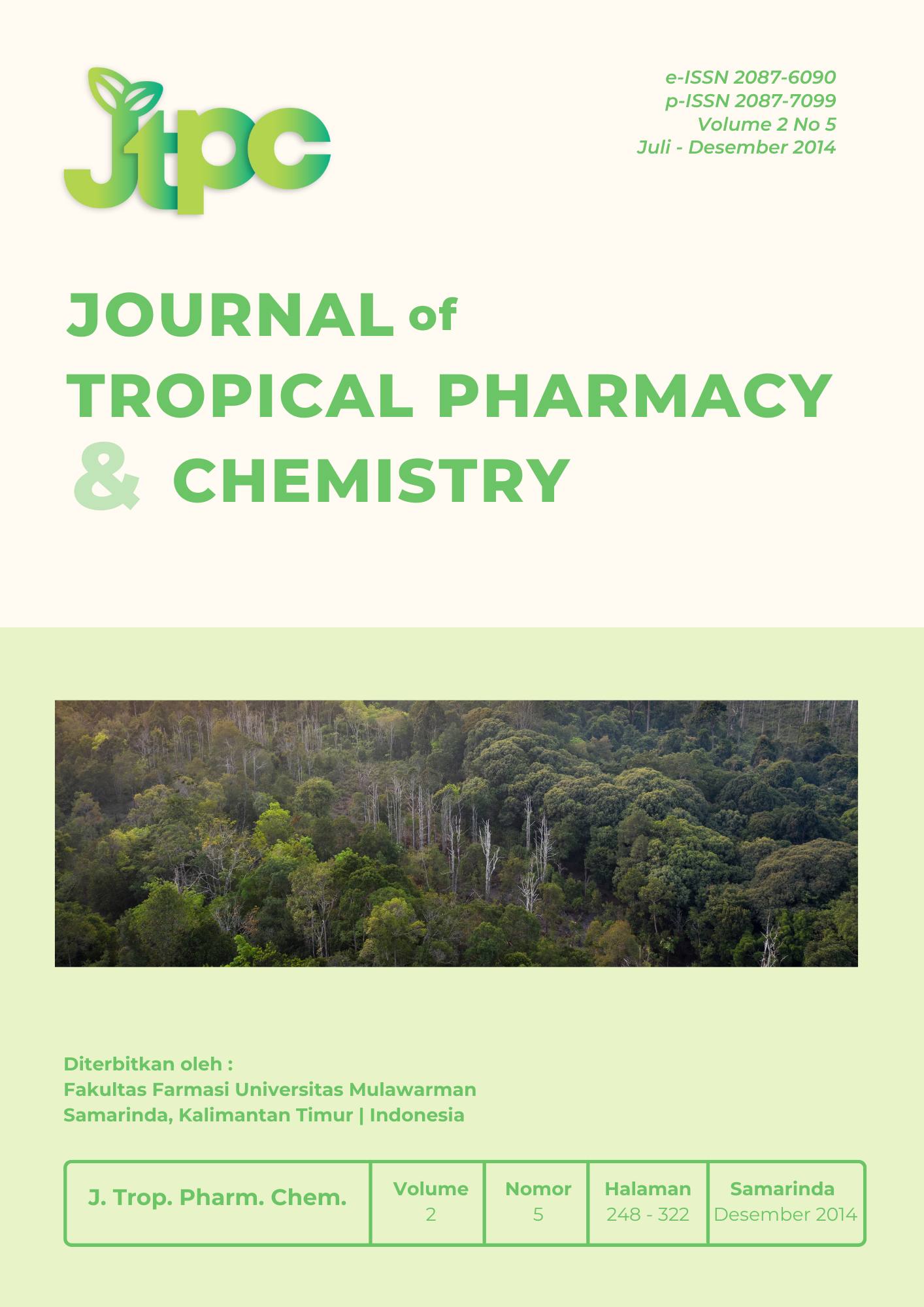Karakteristik dan Pengobatan Pasien Diabetes Mellitus Di Rumah Sakit Panglima Sebaya Paser
Keywords:
Diabetes mellitus, patient characteristics, drug use, drug interactionsAbstract
Diabetes mellitus (DM) is one of the major health problems, every year the number of patients keep increase. DM can cause chronic complications, will degrade the quality of human resources. Drug interactions occur when the effect of a medication change because other drugs, food, or beverages. The best therapeutic treatment concerning the selection and administration of drugs is very beneficial for the patient. This study aims to determine the type and prevalence of DM, characteristics, and use of medications, and potential drug interactions in the treatment of Diabetes Mellitus. Observational study was conducted using retrospective data DM medical records of all patients in Panglima sebaya Paser’s hospital. Then the data are taken randomly 30 patients for further analysis. The Most type of Diabetes Mellitus is NIDDM ( Non Insulin Dependent Diabetes Melitus) as much 1.148 patients, the most characteristic is patients aged 45-59 years (76.66%), female (66.64%), primary school education (34.6%), and not work (86.9%), and has a family history of diabetes (55.6%). The most used drug in the treatment of diabetes is metformin (32.5%) of the biguanide class. Drug interactions are the most common is Insulin with captopril (46%).
Downloads
References
1.Badan Penelitian dan Pengembangan Kesehatan,2013.Riset Kesehatan Dasar 2013. Kementrian Kesehatan RI: Jakarta.
2.Clowes Williams, Beccles, Suffolk.2008. Stockley’s Drug Interactions
Eight Editions. Pharmaceutical Press : London.
3.Corwin, E. J., 2000. Buku Saku Patofisiologi (Handbook of Pathophysiology).Penerbit Buku Kedokteran EGC: Jakarta.
4.Davey, P., 2006. Medicine at A Glance. Penerbit Erlangga: Jakarta.
5.Delamater, A. M., 2006. Imroving Patient Adherence.Clinical Diabetes.
24. (2). 71-77.
6.Dipiro, J., dkk., 2009. Pharmacotherapy Handbook Seventh Edition. McGraw-Hill Medical: New York.
7.Dwiprahasto, I., 2004.Medical Error di Rumah Sakit dan Upaya Untuk Meminimalkan Resiko.Jurnal Manajemen Pelayanan Kesehatan. 7. (1). 1317.
8.Gilman, A.G., 2007. Dasar farmakologi Terapi Volume 2, Penerbit EGC: Jakarta.
9.Gitawati, Retno.2008.Interaksi Obat Dan Beberapa Implikasnya. Media
Litbang Kesehatan. 18. (4). 175-177.
10.Himawan, J. Indra, Aman B. Pulungan, Bambang Tridjaja, Jose R.L. Batubara, 2009. Komplikasi jangka pendek dan jangka Panjang Diabetes Mellitus Tipe 1. Sari Pediatri.10. (6). 367-368.
11.International Diabetes Federation. 2011. Diabetes Evidence Demands Real Action from the UN Summit on Non-Communicable Diseases. http://www.idf.org/diabetes-evidence-demands-real-action-un-summit-non communicable-diseases. Diakses pada tanggal 30 Juni 2014.
12.Irawan, Dedi. 2010. Prevalensi dan Faktor Risiko Kejadian Diabetes Melitus Tipe 2 di Daerah Urban Indonesia (Analisa Data Sekunder Riskesdas 2007). Thesis Universitas Indonesia.
13.Kementerian Kesehatan. 2010. Petunjuk Teknis Pengukuran Faktor Risiko Diabetes Melitus
14.Susilowati, Sri, dan Wiwit Pamuji Rahayu, 2008. Identifikasi Drug Related Problems(DRPs) Yang Potensial Mempengaruhi Efektivitas Terapi Pada Pasien Diabetes Mellitus Tipe II rawat Inap Di RSUD Tugurejo Semarang Periode 2007-2008, Skripsi, Fakultas Farmasi Universitas Wahid Hasyim, Semarang, hal 1-7.
15.Triplitt, C.L., Reasner, C.A., and Isley, W. L., 2005, Diabetes Melitus, in Dipiro, J. T., Talbert, R. L., Yee, G. C., Matzke, G. R., Wells, B. G., Posey, L.M., (eds), Pharmacotherapy A Pathophysiologic Approach, sixth Edition, Appleton and Lange, Stanford Conneticut, hal 1334-1352.
16.Trisnawati, Shara Kurnia dan Soedijono Setyorogo, 2013, Faktor Risiko Kejadian Diabetes Melitus Tipe II Di Puskesmas Kecamatan Cengkareng Jakarta Barat Tahun 2012, 5. (1). 6-10.




